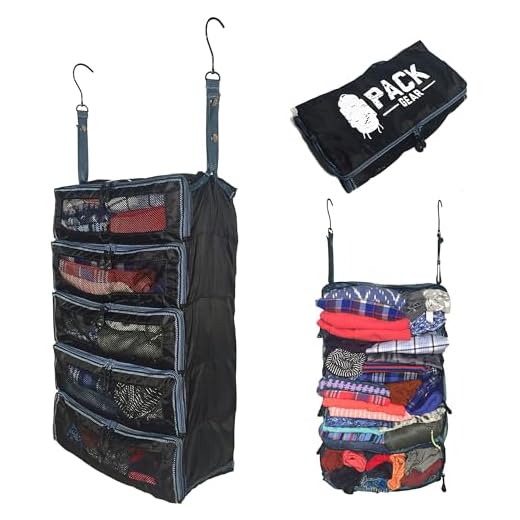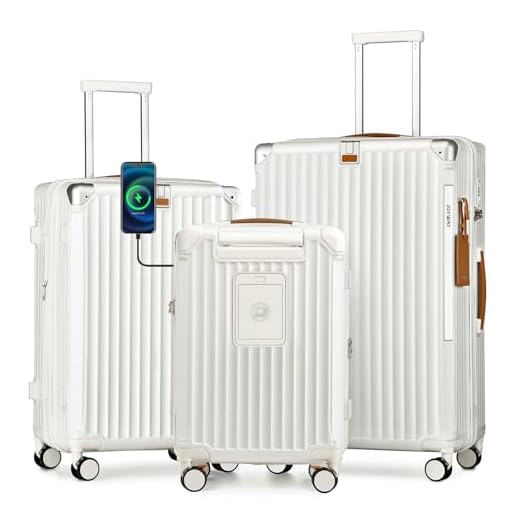





Limitations in both carry-on and checked items can significantly influence safety protocols within aviation. Precautions must be taken to ensure that all gear is properly secured and within regulatory weight limits to avoid shifting during flight, which could compromise stability.
Statistics indicate that improperly stowed items have caused incidents of turbulence-related injuries among passengers and crew. It is recommended that travelers verify the placement and weight compliance of their belongings before boarding. Loose items can interfere with cabin operations and lead to unnecessary hazards.
In rare instances, cargo-related issues have resulted in emergency landings. Passengers are advised to report any suspicious or improperly stored articles to crew members immediately. By adhering to guidelines regarding baggage weight limits and securing belongings, individuals contribute to the overall safety of the flight experience.
Impact of Overweight Baggage on Flight Performance
Overloading a flight with excessive weight can lead to significant alterations in operational efficiency. Aircraft have specific weight limits, and exceeding these can impair takeoff and landing performance. It drastically affects the distance needed for takeoff, potentially resulting in insufficient runway length.
Excess weight increases fuel consumption, leading to higher operational costs and contributing to environmental concerns. Additionally, airlines often face penalties or extra fees for overloaded vessels, which can affect profitability.
In crucial scenarios, maintaining optimal weight distribution is essential to ensure stability and maneuverability. An imbalance can lead to handling difficulties during flight, particularly in adverse weather conditions, increasing overall risk.
To mitigate these risks, airlines must enforce stringent weight regulations and educate passengers on baggage limitations. Implementing accurate weighing systems at check-in can help deter the acceptance of oversize packages, thereby ensuring compliance with operational standards.
Risks Associated with Unsecured Items During Takeoff and Landing
Secure all belongings before takeoff and landing. Unsecured objects can become hazardous projectiles, risking injury to passengers and crew. During rapid altitude changes, the force exerted by unsecured gear can exceed several times their weight, amplifying the danger.
Implement recommendations from aviation safety authorities: all personal items should fit snugly in overhead compartments or beneath seats. Messy cabin configurations heighten the likelihood of injuries. For those unable to secure belongings, communicate with staff for assistance.
Understand the specific threat during critical phases of flight. The initial climb and final approach demand focus and stability onboard, where loose items can lead to distractions and mishaps. Incidents often occur when passengers are inattentive, such as attempting to retrieve objects during these phases.
Significant cargo shifts can also affect balance. Therefore, ensure that heavier items are placed at lower altitudes in personal spaces. Precise loading and balanced distribution of weight contribute to safe operations, particularly during landing.
In emergencies, unrestrained gear can block exits, complicating evacuation processes. Encourage others to be mindful of their surroundings, reinforcing a culture of safety that prioritizes the well-being of everyone onboard.
Case Studies: Luggage-Related Incidents in Aviation History
Reviewing specific incidents illustrates how baggage mishandling can severely impact safety. The 1985 Arrow Air Flight 1285 tragedy exemplifies the consequences of excessive weight manipulation and improper loading practices. This aircraft crashed shortly after takeoff from Gander International Airport, claiming 256 lives. Investigations revealed that the weight distribution of cargo significantly contributed to the aircraft’s difficulties in achieving lift.
1996 Air China Flight 129 Incident
The 1996 accident involving Air China Flight 129 also highlights risks associated with improperly secured items. During takeoff, a loose object caused a critical malfunction. Subsequent investigations noted that insufficient procedures regarding cargo stowage contributed to catastrophic outcomes. This incident stresses the necessity for stringent adherence to loading regulations and thorough security checks.
2006 Incident on a UK Domestic Flight
A 2006 occurrence on a UK domestic flight involved the removal of an unsecured bag during takeoff, which led to a chain reaction that compromised cabin integrity. The loss of cabin pressure resulted in an emergency landing. This event reinforces the importance of stringent monitoring of loose items and thorough pre-flight checks.
Analyzing these events demonstrates that thorough baggage management protocols are crucial in preventing incidents that may jeopardize flight safety. Aviation authorities and airlines must adopt stringent measures to enhance loading practices and ensure that all items comply with safety standards.
Regulations for Carry-On and Checked Baggage Safety
Ensure compliance with weight restrictions assigned by airlines to mitigate risks. Typically, carry-on items should not exceed carry-on limitations, generally around 7-10 kg, while checked bags typically range from 20-23 kg. Be aware that exceeding these limits can affect aircraft balance and fuel efficiency.
Prohibited Items
Adhere to regulations regarding hazardous materials. Items such as flammable substances, sharp objects, and explosives are strictly forbidden in both checked and hand baggage. Familiarize yourself with the list of restricted items published by aviation authorities to minimize safety hazards.
Secure Packing
Utilize sturdy luggage with functional zippers and locks to prevent accidental opening during transit. Packing strategies should incorporate cushion materials around fragile items to avoid damage. Organize belongings systematically to facilitate quick inspections and enhance safety.
Regularly review and stay updated on airline-specific policies as they may vary significantly. Non-compliance with these regulations not only poses safety threats but may also result in penalties or confiscation of items.
Best Practices for Passengers to Ensure Safe Baggage Handling
Label all bags with your contact information, including name, phone number, and email address. This will assist in the swift return of items in case they are lost.
Always check airline guidelines regarding weight limits and dimensions for checked and carry-on bags. Adhering to these specifications minimizes the risk of delays and potential hazards during loading.
Invest in a best backpack for emergency go bag to securely store essential items, ensuring that your valuables remain with you at all times and reducing the chance of loss.
Utilize proper packing techniques. Distribute weight evenly and position heavier items closer to the base of bags. This can prevent imbalances that may affect transport safety.
For carry-on items, utilize a best folding travel umbrella that can fit easily in overhead compartments, ensuring clear access to emergency exits and preventing obstructions.
Be mindful of sharp or fragile objects. Pack these items securely and consider using protective cases to avoid injuries or damage during transit.
Report any suspicious activity or unauthorized access to baggage. Keeping vigilant helps maintain the safety and security of all passengers.
Finally, always comply with airport security regulations, ensuring that prohibited items are not included in your bags to facilitate a smooth security screening process.
Technological Solutions for Monitoring and Managing Baggage Risks
The implementation of advanced technologies is paramount for mitigating risks linked to personal belongings during the flight process. Innovations in tracking and security can greatly enhance safety measures, ensuring items are accounted for and secured throughout the journey.
Real-Time Tracking Systems
Employing real-time tracking mechanisms offers substantial benefits in monitoring passenger belongings. Technologies such as RFID (Radio-Frequency Identification) and GPS (Global Positioning System) allow for:
- Enhanced visibility of bags from check-in to arrival.
- Immediate alerts for misplaced or incorrectly routed items.
- Data collection on handling practices to identify safety trends.
Automated Handling Solutions
Automation in baggage handling processes can drastically reduce errors associated with manual operations. Solutions include:
- Automated sorting systems that provide a more accurate assignment of items to their respective flights.
- Robotic systems that manage the loading and unloading of cargo, minimizing human error.
- Integration of AI to continually assess and optimize handling procedures.
Moreover, proactive maintenance of baggage handling equipment is necessary. For example, utilizing best gliders for a washing machine as part of a maintenance toolkit can ensure that conveyor systems operate smoothly and efficiently.
Establishing communication channels between airlines and ground handling teams, using mobile apps to track and manage items in real-time, supports better coordination. Such measures not only streamline operations but also enhance overall security protocols.







